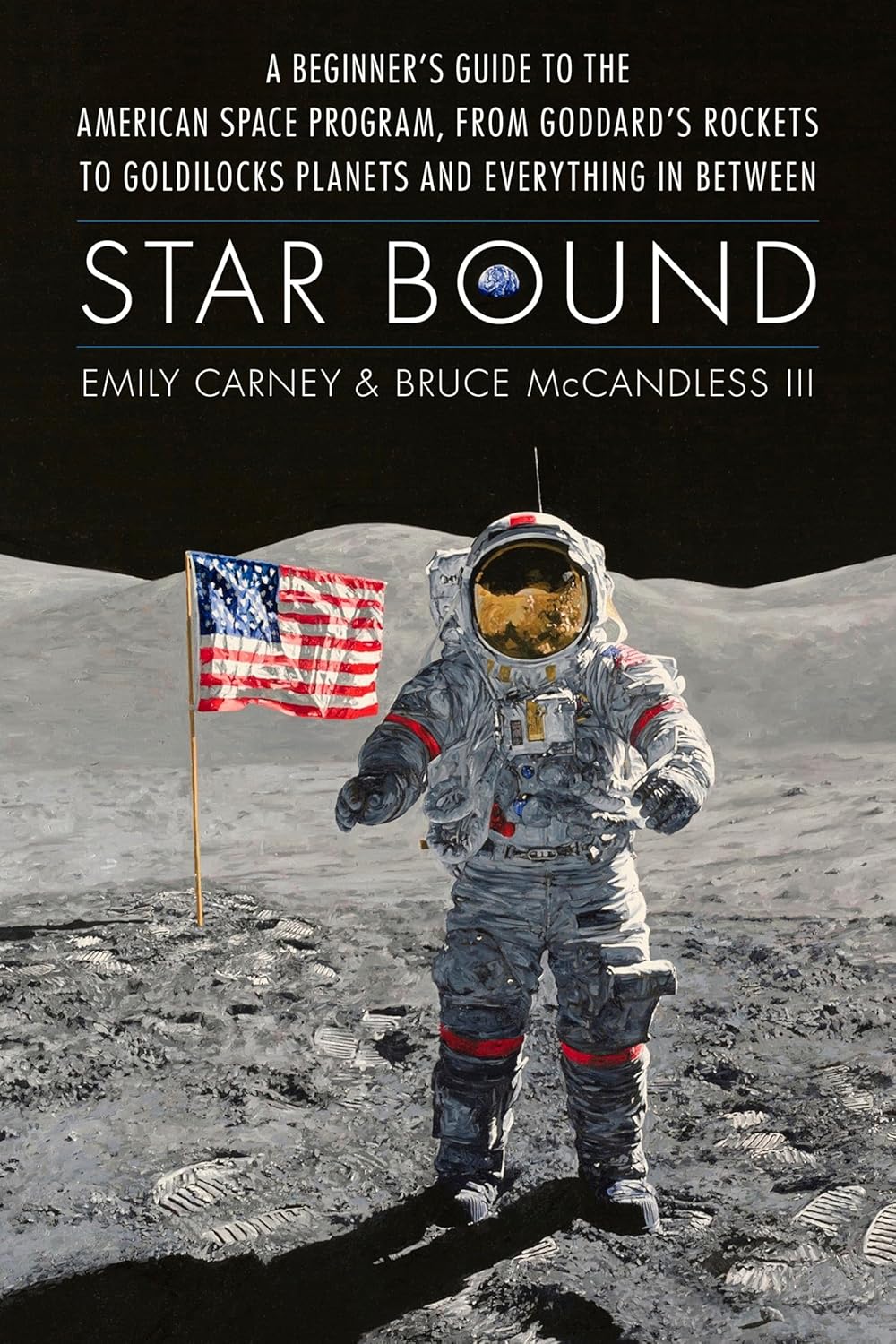History & Culture
A Whirlwind Tour of the American Space Program
A new book on the history of American spaceflight presents our ongoing endeavor to leave Earth and venture into space as a grand yet entirely human one.
By Jaime Herndon
Launch of Apollo in 1967. Courtesy NASA.
If you’ve ever wanted to start learning about the American space program weren’t sure where to start, or even if you think you know about the American space program but want to learn even more, then the new book by Emily Carney and Bruce McCandless III (yes, the son of that Bruce McCandless II, the astronaut in the iconic photo of the first untethered spacewalk from STS-41B) is for you.II
Star Bound: A Beginner’s Guide to the American Space Program, From Goddard’s Rockets to Goldilocks Planets and Everything in Between is an extensive yet accessible, fun yet well-researched book that speaks to both space program newbies and aficionados. As the authors write in the first chapter about the program when acknowledging how other texts are written and how exclusionary some space enthusiasts can be, “It’s a human story, and because this is so, it’s fascinating beyond reason and beautiful beyond analysis. Don’t let the gatekeepers distract you.”
The book’s authors have a wealth of spaceflight knowledge between them. Carney worked as a nuclear technician for the U.S. Navy, is a notable space journalist, and is founder of the 65k-member Facebook group Space Hipsters. She is also manager of public engagement and social media for the Space 3.0 Foundation, a non-profit organization that aims to preserve the history of spaceflight and promote STEM initiatives. In addition to being the son of the aforementioned astronaut, McCandless is a writer and attorney.
True to their word, Carney and McCandless are anything but gatekeepers. Instead, they throw the doors to learning about space exploration wide open in their book through accessible language and irreverent humor. Interspersed with chapters about topics like Wernher von Braun, a Nazi rocket scientist who became a pioneer in the American space program, Sputnik and the Soviet space program, and the commercialization of space, are fun lists like “NASA’s Eleven Coolest Astronauts,” “The All-Time Greatest Space Exploration Playlist,” and “Eleven Boffo Space Books to Launch at Your Brain.”
The first chapter, aptly titled “First Principles,” explains the aim of the book and what the authors hope to do, acknowledging that this is an introductory text—but not a dumbed-down one by any means. Instead, the authors seek to share their love and enthusiasm for space exploration with the reader and hope to instill some of that passion and curiosity into those who pick up the book. They address some of the basic challenges that are important to understand when discussing space exploration: things like what is “space” and how are we defining it; the issues of mass, gravity, and atmosphere; and what are rockets. Once these topics are out of the way, the book begins in earnest, starting with the history of rockets and Robert Goddard, who is often referred to as the “Father of Modern Rocketry.”
Carney and McCandless then take the reader on a tour through the history of the American space program, exploring the impact of the Soviet space program on America’s goals, NASA’s Project Mercury and the Gemini missions, the American astronaut in society and pop culture, and Skylab. They then move into rover development, NASA’s Artemis campaign, how the space race has changed and evolved over time, commercialization of space, and finally, how we all benefit from the space program and why it is all worth it in the end.
If this seems like an immense area to tackle, it is, covering myriad, complicated topics over an incredibly large expanse of time. There were points where, while reading, it felt like the text was moving too fast and skimming over topics (the 80s and 90s felt like a big blur while reading), but this is to be expected in an introductory text that aims to provide a big picture overview and hopes to pique the curiosity of the reader in order to encourage further reading elsewhere. This is not enough of a drawback that it impacted the appeal of the book in any way, however. Knowing what the book is and is not will help readers temper expectations and approach the material realistically. For the beginner especially, this approach is an easy way to get a thorough overview of the American space program.
I recommend this book, even for those who already have a solid foundation of knowledge when it comes to the space program. There are so many topics that Carney and McCandless explore that I suspect any reader will still learn a sizeable amount—and their wit and unabashed geekiness over all things space make for a delightful read and may remind you why you fell in love with spaceflight.

Star Bound is a new history of the American space program by authors Emily Carney and Bruce McCandless III.
[University of Nebraska Press]
JAIME HERNDON is a science writer and editor.
Mercury is an advertisement-free publication. If you are interested in supporting Mercury, please email us.




